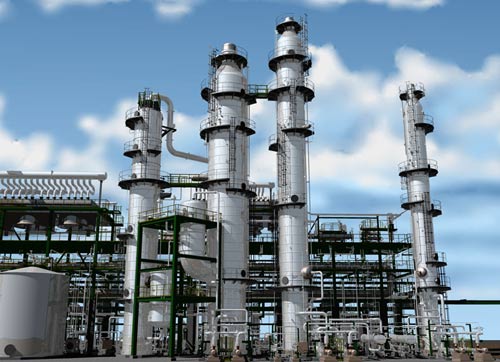
Geothermal plant with single well drilling technologyg
At a depth of 6,400 km, the Earth’s core contains molten matter with temperatures up to 5,400°C – the same number as the surface of the Sun. An energy industry was born in the 20th century with the desire to exploit this almost limitless source of energy. They called themselves geothermal and raised a slogan: The Earth’s core is the new Sun at our feet”.
Geological studies show that since the Earth was formed, its core has been continuously heated and replenished with heat from natural radioactive decay. This process occurs at a rate of about 30,000 billion J/s, almost twice the energy consumption of all humanity.
It is worth mentioning that the Earth’s core will continue to burn for billions of years. ARPA-E AltaRock Energy, a project of the US Department of Energy, estimates that just 0.1% of the Earth’s heat is enough to power our civilization for 2 million years. All we need to do is just exploit it.
However, geothermal mining turned out to be no easy task.
When we talk about modern geothermal extraction systems, we have to talk about turning the temperature inside the Earth into electricity. Those are geothermal power plants. In 1960, the first geothermal power plant in the United States was built in the Geysers region of California. Since then, the United States has had 60 geothermal power plants and they are still in operation.
Later on, geothermal power mining technologies became more and more modern and developed at a rapid pace.
Renewable forms of energy such as wind and solar are currently believed to be the best alternatives to fossil energy. However, they are not without their drawbacks.
While thermal power plants using coal, oil or hydro can be switched on and off easily according to demand, wind and solar power must depend on… wind and solar. You cannot generate solar power at night and collect wind power during windless days.
In addition, questions are being raised about the sustainability of these renewable energy extraction plants themselves. In an increasingly electrified world, how far can solar, wind and battery systems take humanity? Can they meet 50%, 80% or 100% of the electricity demand? What happens when these power systems expire?
Therefore, building another renewable power system that fills the gaps left by wind and solar power is an urgent requirement. And geothermal is now a perfect source of additional energy. Geothermal is renewable and even it is inexhaustible. Geothermal plants can run as basic electricity around the clock or “onload” to supplement the volatility of renewables.
Geothermal can be mined almost anywhere in the world. It is also a reliable source of energy, since the entire system is located largely underground, geothermal plants are resistant to most weather (and human) disasters. It can operate without polluting or emitting no greenhouse gases. Excess heat from geothermal mining can also be used to power heating systems during the winter.
Immersed in that common trend, we THD Vietnam are applying advanced technologies to implement the project of building a geothermal plant with single-well drilling technology.
Another advantage that is getting more people talking about geothermal is the somewhat fortuitous opportunity it opens up for the oil and gas industry. The fossil fuel mining giant industry is already reeling from oversupply, persistently low prices, and falling demand curves caused by the COVID-19 pandemic.
Điều khoản sử dụng | Chính sách bảo mật
Bản quyền thuộc về THD VIỆT NAM